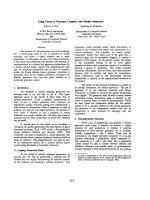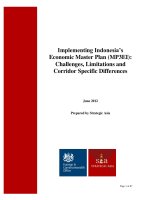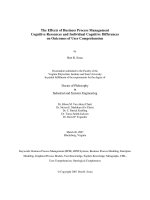Present progressive and simple present differences
Bạn đang xem bản rút gọn của tài liệu. Xem và tải ngay bản đầy đủ của tài liệu tại đây (12.49 KB, 1 trang )
Present progressive and simple present: differences
Long lasting situations
The present progressive is not normally used to talk about long lasting or permanent situations. Instead, we use
the simple present.
My sister lives abroad. (Long lasting or permanent situation)
She is living with me at the moment. (Temporary situation)
Who is that boy standing at the gate? (Temporary situation)
A big castle stands on the hill. (Permanent situation)
Repeated actions
We often use the present progressive to talk about repeated actions and events.
Why is he hitting the dog?
We do not normally use the present progressive to talk about repeated actions that aren’t happening around the
moment of speaking.
Compare:
The water is boiling. (=The water is boiling at the moment of speaking.)
Water boils at 100 degree Celsius. (NOT Water is boiling at …)
Physical feelings
Many verbs that refer to physical feelings (e.g. feel, hurt, ache etc.) can be used in simple or progressive tenses
without much difference of meaning.
I feel fine. OR I am feeling fine.
My tooth aches. OR My tooth is aching.
Verbs not used in the progressive
Some verbs are not normally used in progressive forms. Examples are: believe, doubt, imagine, know, like,
dislike, love, hate, prefer, realise, recognise, remember, suppose, understand, want, wish, seem, sound, hear,
see, smell, taste etc.
I like this color. (NOT I am liking this color.)
I don’t believe this. (NOT I am not believing this.)
Stay on top of your writing! Download our grammar guide from www.englishgrammar.org to stay up-to-date.
Powered by TCPDF (www.tcpdf.org)









